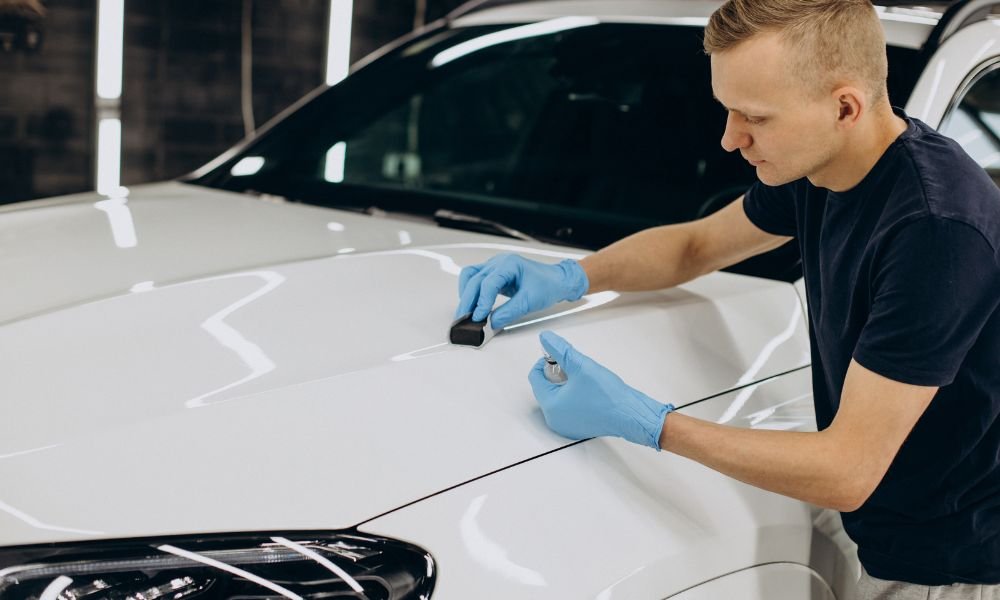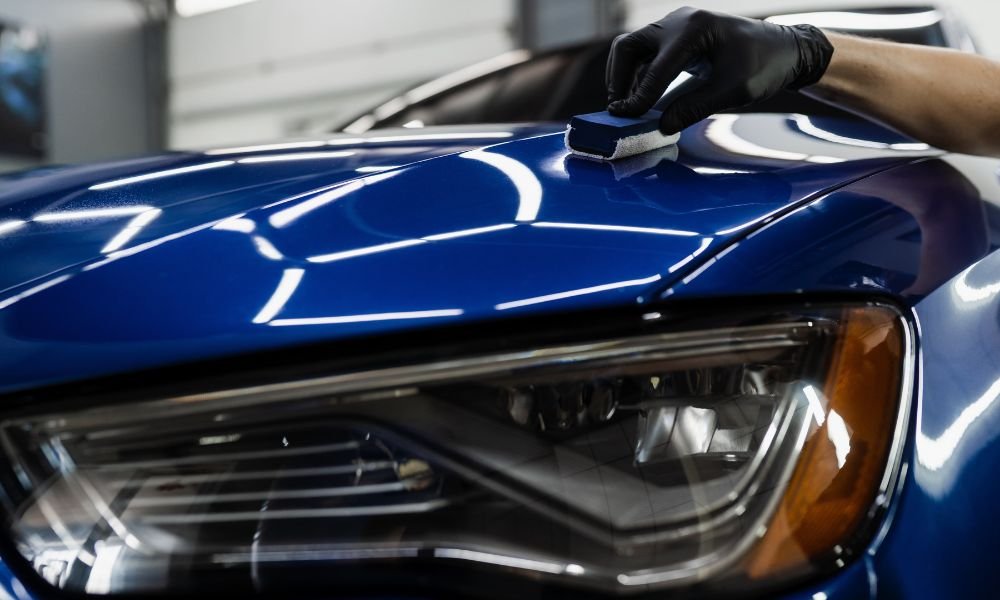The Value of Ceramic Coating: Safeguarding Your Automobile's Exterior With Accuracy
In an era where keeping the functional and visual honesty of your car is critical, ceramic finishing arises as a pivotal service. With its one-of-a-kind bonding homes, ceramic finish provides a degree of protection that far exceeds traditional waxing approaches.
Advantages of Ceramic Coating
When it comes to maintaining an auto's visual charm, ceramic layer offers considerable benefits. By forming a semi-permanent bond with the car's paint, ceramic layers effectively avoid oxidation and fading, guaranteeing that the car preserves a glossy, showroom-like coating for an extensive period.
Along with its safety high qualities, ceramic covering provides exceptional hydrophobic buildings, creating water and various other liquids to bead off effortlessly. This feature simplifies the cleaning process, as dirt and particles are less likely to abide by the surface, decreasing the frequency and effort needed for maintenance. The finishing's resistance to chemical stains from acidic contaminants like bird droppings and tree sap is another notable advantage, reducing prospective paint damages.
Ceramic coatings also enhance scrape resistance, providing a layer that can take in minor abrasions and swirl marks. This attribute is especially valuable in maintaining an excellent surface area, reducing the likelihood of visible imperfections and protecting the integrity of the vehicle's paintwork over time.

Just How Ceramic Layer Functions
Understanding the auto mechanics behind ceramic covering exposes its efficacy as a safety solution for automobiles. Ceramic finishes are basically liquid polymer applications that chemically bond with a car's factory paint, producing a protective layer. This layer acts as a barrier versus environmental contaminants such as dirt, crud, and ultraviolet rays, which can weaken a vehicle's exterior in time. The essential part in ceramic finishing is silicon dioxide (SiO2), which originates from quartz crystals and is understood for its outstanding firmness and toughness.
Application of ceramic covering includes a meticulous procedure. At first, the car's surface area must be thoroughly cleaned up and decontaminated to make certain ideal bond. When applied, the fluid polymer develops a semi-permanent bond with the paint, solidifying right into a transparent, resilient guard. This shield boosts the cars and truck's gloss and hydrophobic residential or commercial properties, facilitating less complicated cleaning by creating water and pollutants to grain and slide off effortlessly.
Furthermore, the coating's molecular structure gives resistance to minor scrapes and chemical stains. Unlike waxes or sealers that sit on top of the paint, ceramic coverings incorporate with the surface, using lasting defense. This integration is basic to its effectiveness, making certain the vehicle's surface continues to be beautiful for several years.
Comparing Ceramic Coating to Alternatives
In the realm of automobile defense, ceramic layer stands as a powerful choice when contrasted to typical alternatives such as sealers and waxes. While waxes supply a temporary lustrous surface, normally lasting just a few weeks to months, ceramic finishes give a longer-lasting option, commonly enduring for many years. This sturdiness is credited to the chemical bonding that takes place when ceramic finishings are used, developing a solid layer that is resistant to ecological hazards.
Contrastingly, sealants, although more durable than waxes, still drop brief of the durable see here now protection used by ceramic layers. Sealants can usually last for approximately a year, giving an artificial shield versus specific elements. They lack the premium hydrophobic over here residential properties and UV defense that ceramic coverings deliver.
Moreover, ceramic layers use improved scratch resistance, which neither waxes neither sealers can properly match (ceramic coating). This is especially helpful in maintaining an automobile's pristine appearance. Additionally, ceramic layers streamline upkeep efforts by lowering the adherence of dust and gunk, therefore helping with easier cleaning. In recap, while conventional waxes and sealers use basic security, ceramic coatings present a thorough, long-lasting solution that significantly improves and maintains the vehicle's outside surface.
Application Refine Discussed
Using ceramic finish to a vehicle needs a thorough process to make certain optimal results and longevity. Once cleaned up, the car is dried out and brightened to get rid of any type of flaws, as any existing scrapes or swirls can become more noticable after the finishing is applied.
Adhering to surface prep work, the application of the ceramic finish begins. Using an applicator pad, the ceramic coating is used in tiny areas to ensure also insurance coverage.
After application, the layer requires a certain healing period, throughout which the vehicle must be safeguarded from water and pollutants. This curing procedure can differ depending upon the product yet generally varies from 24 to 2 days. Eventually, this comprehensive process is crucial in attaining a shiny and resilient surface.
Maintenance Tips for Durability
To preserve the longevity of a ceramic finishing, adherence to a disciplined upkeep regimen is necessary. Stay clear of automated auto washes, as their rough brushes can compromise the coating's integrity.
Post-wash, drying the automobile with a clean microfiber towel avoids water spots that might deteriorate click for source the finishing over time. Additionally, apply a ceramic finish booster every couple of months. These boosters strengthen the hydrophobic properties and improve the coating's safety capabilities, guaranteeing it stays efficient against pollutants.
Remember that auto parking locations play a critical role in maintenance. ceramic coating. Whenever possible, park in shaded locations to minimize UV direct exposure, which can progressively damage the covering. For lasting storage, think about using a vehicle cover for added protection versus ecological components
Conclusion
Finally, ceramic finishing acts as a crucial protective layer for lorry exteriors, supplying long-lasting defense versus environmental variables such as dust, uv, and gunk rays. By creating a semi-permanent bond with the paint, it improves visual charm while maintaining the automobile's worth. Its hydrophobic residential or commercial properties promote much easier upkeep, differentiating it from different protective approaches. Understanding the application process and sticking to upkeep suggestions are essential for making best use of the durability and performance of ceramic finish.
When it comes to preserving a vehicle's visual charm, ceramic finishing provides considerable advantages. By forming a semi-permanent bond with the lorry's paint, ceramic coverings effectively prevent oxidation and fading, ensuring that the car keeps a shiny, showroom-like surface for an extended duration. Ceramic layers are basically liquid polymer applications that chemically bond with a vehicle's factory paint, developing a safety layer. In summary, while conventional waxes and sealants supply fundamental protection, ceramic coatings provide a thorough, long-lasting service that significantly maintains the automobile and enhances's outside surface.
